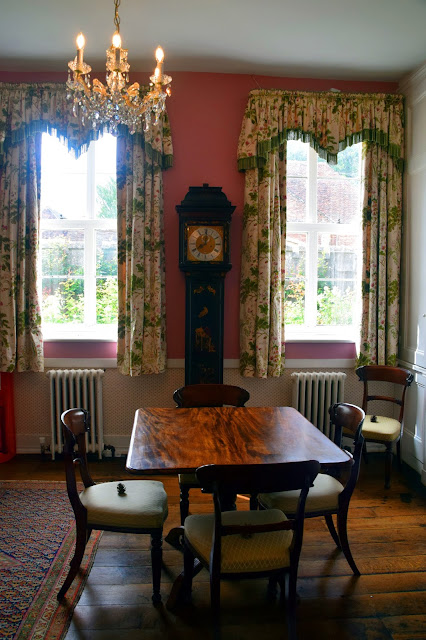with DEDICATION TO AMERICAN MARRIAGE WHO HELPED TO FIND THE WAY BACK HOME
[I was walking to this castle from Hever castle where I spend most of day. The walk was through footpath in the forest. I enjoyed walking and visiting Chiddingstone Castle. Unfortunately when I liked to back I lost this footpath and walking around this castle few times. The time was going very fast and it was time for come back home. I can say I'm lucky. I met wonderful American people who helped me. They offered to lift me to train station where I could caught the train to Chertsey. We sat together chatting about castles ruins and beautiful area Kent. It was so nice afternoon. Unfortunately I didn't ask them about names but I'm very thankful to get their help.]
THANK YOU MY DEAREST STRANGERS
Chiddingstone Castle is situated in the village of Chiddingstone.
The castle itself dates from the early 19th century, but incorporates
elements of earlier buildings on the same site. From the early 16th
century to the end of the 19th century it was the seat of the Streatfeild family. Since 1977, the castle and its 35 acres (140,000 m2) of grounds have been held in trust for the nation by the Denys Eyre Bower Bequest and both are open to the public.
he first significant building to occupy the site of the castle was a
timber-framed dwelling, inhabited from the early 16th century by Richard
Streatfeild, an iron master and wool merchant. Little remains of this
first structure as, in 1679, Henry Streatfeild (1639-1719) had the house
rebuilt in red brick in the Restoration style. The building was known as High Street House or High Street Mansion
since it fronted the village high street. Remodelling of the house's
grounds in the 19th century resulted in the current diversion of the
road through the village
In the early 19th century, Henry Streatfeild (1757-1829), the son of Henry Streatfeild (1706-1762) and Lady Anne Sidney, commissioned William Atkinson to rebuild the house in the Gothic style
however Atkinson's design was not completed and, in 1835, Streatfeild's
son, also Henry Streatfeild (1784-1852), engaged the architect Henry
Kendal to carry out further work.
Although the Streatfields owned the house, now renamed Chiddingstone
Castle, until it was sold to Lord Astor in 1938, the family did not live
there after 1900. During the Second World War, the castle hosted members of the Canadian Forces before becoming Long Dene School until 1954
 |
| The Victorian Orangery |
In 1955, the castle was purchased by Denys Eyre Bower (1905-1977), a
former bank clerk and antiques dealer, in order to display his
collections. Bower was born in Crich, Derbyshire
and started collecting at a young age. Bower initially worked as a bank
clerk before taking over Cavendish Hood antiques dealers in Baker Street, London in 1943. The redevelopment of Baker Street led to Bower moving to Chiddingstone
Castle where he intended to show his collections to the public.
However, in 1957 Bower was convicted of attempted murder of his
girlfriend and attempted suicide and sentenced to life imprisonment.
Released in 1962 after successful efforts by solicitor Ruth Eldridge to
prove a miscarriage of justice, Bower returned to Chiddingstone Castle
which, with the help of Eldridge and her sister Mary, he continued to
open to visitors until his death in 1977
 |
The White Rose Drawing Room |
 |
Print Room |

































No comments:
Post a Comment